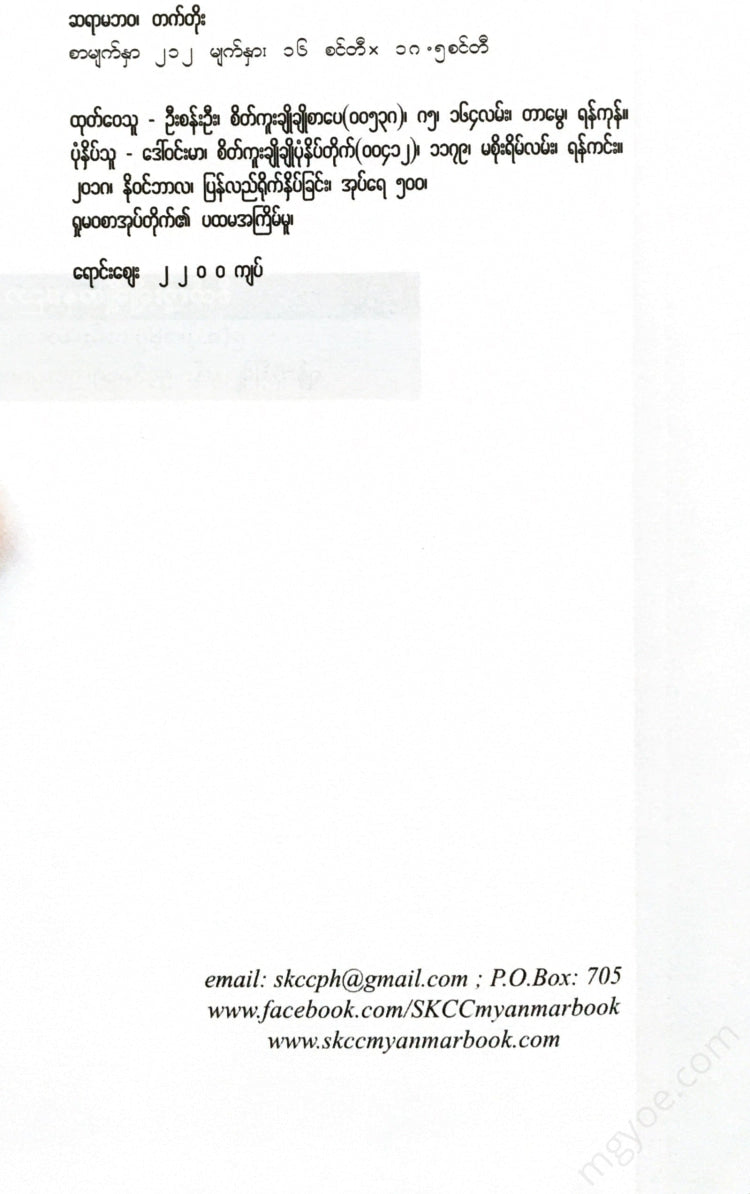စိတ်ကူးချိုချိုစာပေ
Tatto - Teacher's Life
Tatto - Teacher's Life
Couldn't load pickup availability
When I was a teacher in both urban and rural schools, I thought that schools should have a permanent doctor. That doctor was not for the students. That doctor was for the visitors. Because sometimes the visitors to the school
Because even just watching them work at school for a morning can be very disturbing.
For mothers, this is probably what they want. Usually, mothers are happy when they visit schools. They see children playing happily. But what about those children?
But they don't often think about how happy they are. Even being happy is only a momentary satisfaction for the mother.
Sometimes a father looks at his children and becomes anxious. He wonders how his son will get to Harvard from this chaotic classroom.
But a traditional classroom would be the most traumatic for a good teacher who has spent his entire life teaching.
“What about the classroom?” you might ask. The teacher said this in a more or less gentle tone. “I sympathize with them. Because in the schools I taught in, the students sat on desks and chairs screwed to the floor so that they could not move, and they did not talk to each other. The teacher had to teach in front of the students in a very strict manner. If they did not do this, they would not be able to complete their studies and succeed.”
Our students are very busy. They are always busy all day long. For example, eleven-year-olds are so busy that they can't move their chairs and tables because they are so fixed. Other objects are also not fixed in one place but are moving around. Children are the most active.
Some would be working on a job that had been accepted in the printing room. There they would at least be sitting at the typewriter. But at the big door, people were coming in and out carrying packages and things. Their voices seemed to compete with the constant hum of the machines. They were shouting orders and criticizing. Sometimes the weekly foreman would call out to the teacher and ask, “We have finished printing the readings for the seven-year-olds. Now, should we print cards for the library? Or should we print stationery for the parents’ association?”
There was no peace in the schoolroom. There was no peace in sight or in hearing. Sometimes the eleven-year-olds in the corner of the room would argue over the magazine committee. Sometimes a nine-year-old or a thirteen-year-old would criticize an article written for the magazine that was about to be printed. Sometimes an eight-year-old girl would come in with a big bag slung over her shoulder, with a look of serious responsibility on her face. She was a postwoman from the post office where the eight-year-olds worked, and she had come in to deliver a special invitation to the eleven-year-olds for the next morning's play in the playhouse.
At that time, two eleven-year-olds returned from buying paper, pencils, books, and colored pencils from the school shop run by the nine-year-olds. A tall twelve-year-old boy brought them a pack of the “Ghahad” newspaper they published to sell for one cent each.
At that moment, five eleven-year-old girls would run into the room. You could tell by their tattered outerwear who was from the chemistry lab, who from the shop, who from the clay workshop. As they arrived, you would hear the sound of bookcases opening. Some would take out their arithmetic books to correct. Some would take out their notebooks to write down astronomy facts. The teacher would ask, “How much time do you have?” She would not ask, “What are you going to do now?” Every student knew how much work they had left to do. They would work on it as quickly as they could. Sometimes, their classmate would hold a book.
The student, who was doing the calculations, shook his brown hair back and said, “We can’t lose any more pencils. If we buy more pencils this week, we won’t be able to go to Chinatown.” The whole room was noisy. The walls of the room were almost echoing. Out of the twenty people in the room, only one person was quiet. And that person was the teacher.
If a visitor were to say so, it would be wrong. This room is not like any other schoolroom. But it is very much like something else. This place is like a part of an office, a factory, a business, where grown-ups grow up. Unlike the students, who have white shirts and clean faces, these children wear factory coats with their tops covered in dirt. Girls and boys alike. You can tell their jobs by just looking at their clothes. “Why can’t they be like that?” a mother once asked. But have you ever seen a printer in the world whose trousers, shirt, and face are not stained with ink? Have you ever seen a cook whose elbows are not covered in flour?
This classroom is a place of work. Workers cannot stay in one place. They travel for their various tasks. They come and go. They carry materials. They ask for advice. They inspect. They consult. Each worker is responsible for his work as he performs it.







